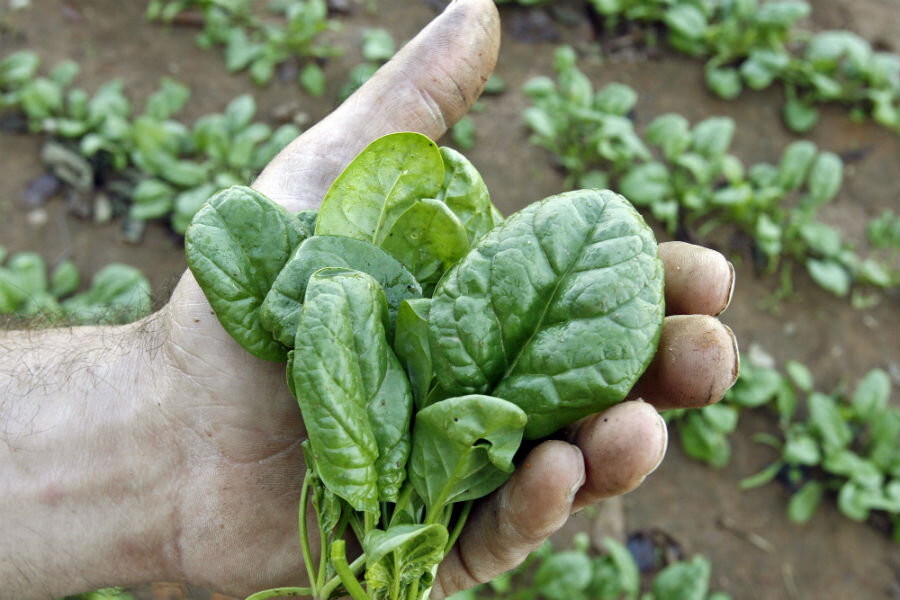Is it possible to grow spinach locally and year-round?
Loading...
A BrightFarms greenhouse in Pennsylvania produces around 34,000 kilograms (75,000 pounds) of nutrient-rich spinach per year—even in the thick of winter—while also conserving land, water, and fossil fuels. In this episode of How Does it Grow, viewers get a glimpse of the greenhouse where, through hydroponics, BrightFarms creates an environment conducive to growing spinach year-round.
Plants at BrightFarms are grown in nutrient-enriched water instead of soil. The greenhouse, as big as a football field, is filled with around 151,000 liters (40,000 gallons) of water. The water is re-circulated through the pond, which allows this greenhouse to use 80 percent less water than conventional agriculture.
The plants sit on long, narrow boards floating on the pond with their roots released into the water through small slits in the boards. With the help of computer technology, head farmer Jason Jackson can control heat, moisture, and daylight settings of the greenhouse, giving him an advantage over conventional farmers who would not be able to manipulate such naturally occurring conditions.
However, hydroponics is not without challenges. In the absence of soil as a buffer between the tender roots and potent fertilizer, Jackson must achieve precision in the mix of nutrients given to the plants.
“If I don’t get it quite right, I could potentially burn the plants,” Jackson says, “At which point we would have to drain the pond.”
Spinach is also particularly vulnerable to a fungus called Pythium, which spreads by swimming. Growing spinach through hydroponics, as opposed to soil, can create the perfect environment for the Pythium to proliferate in. But instead of relying on harsh chemicals like fungicide to keep Pythium in check, Jackson tackles the problem by also growing lettuce along with the spinach, which can deter the growth of the fungus.
Satisfying that spinach craving in the middle of winter while striving to keep food miles low may present a dilemma, but perhaps hydroponic spinach can offer an environmentally agreeable solution worth exploring. To learn more, check out the hydroponic spinach episode of How Does it Grow? here.
This article appeared first in Food Tank.







